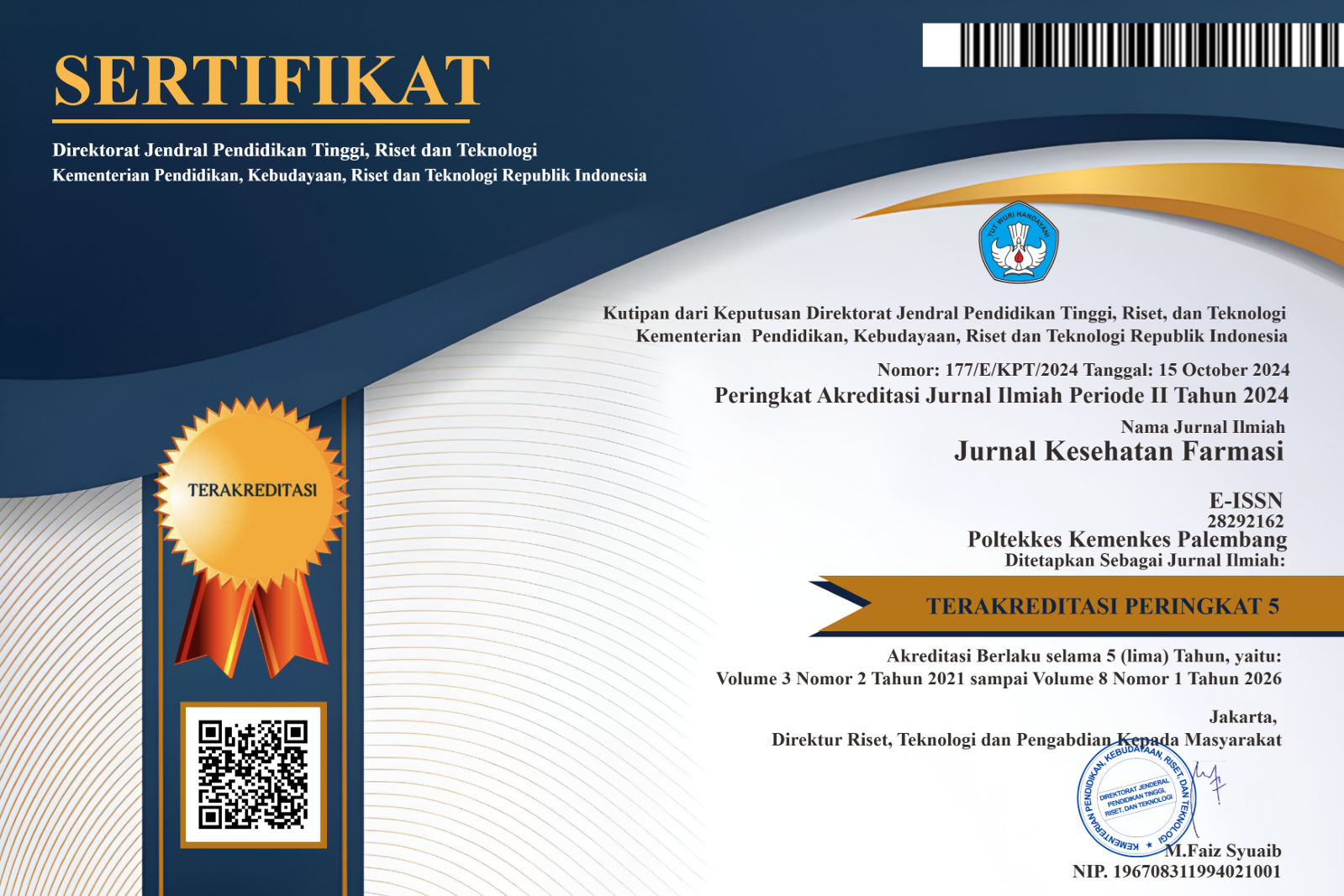Efek Ekstrak Metanol Maggot (H.Illucens) Terhadap Penyembuhan Luka Terbuka Pada Tikus (Rattus novergicus)
Abstract
ABSTRAKLATAR BELAKANG : Terapi maggot (H. illucens) telah digunakan untuk pengobatan melalui debridemen belatung sehingga memicu terjadinya penyembuhan luka terinfeksi. Terapi ini sudah ada sejak beberapa abad lalu. Ekstrak kasar maggot (H.illucens) telah diketahui memiliki efek antibakteri. Oleh karena itu, penelitian ini bertujuan untuk menguji konsentrasi ekstrak metanol maggot (H.illucens) dalam mempercepat penyembuhan luka terbuka tikus putih jantan. METODE PENELITIAN : Jenis penelitian ini menggunakan jenis penelitian true-eksperiment posttest dengan kelompok control. Menggunakan 30 ekor tikus puith jantan yang dibagi menjadi enam kelompok perlakuan. Kelompok I kontrol negative, kelompok II kontrol positif, kelompok III konsentrasi 10%, kelompok IV konsentrasi 15%, kelompok V konsentrasi 20% dan kelompok VI tanpa perlakuan. Perlakuan dilakukan selama 14 hari. Tikus yang telah dilukai dengan diameter
±1,5 cm dan diukur diameter nya secara vertical, horizontal, dan kedua diagonal dan juga diamati visual penyembuhan luka. HASIL : Hasil analisa data persentase penyembuhan luka terbuka pada tikus putih konsentrasi ekstrak maggot (H.illucens) 20% memiliki persentase penyembuhan luka yang lebih besar dibanding dengan konsentrasi 10% dan 15% yaitu sebesar 92.54%. Berdasarkan hasil analisa statistik One way Anova data persentase penyembuhan luka terbuka pada tikus putih konsentrasi ekstrak maggot (H.illucens) 15% mampu memberikan efek penyembuhan luka terbuka tikus putih jantan yang hampir sama dengan kontrol positif dengan nilai p>0.05. KESIMPULAN : Penelitian ini menunjukkan bahwa persentase penyembuhan luka terbuka tikus putih jantan (Rattus novergicus), pada konsentrasi 20% mampu mempercepat proses penyembuhan luka terbuka pada tikus putih jantan (Rattus novergicus)
KATA KUNCI : larva lalat, luka terbuka, Maggot (H.illucens), Rattus novergicus
ABSTRACT
BACKGROUND: Therapy of Maggot debridement (H. Illucens) has been used for the treatment of Maghgos, which can lead to the healing of infected wounds. This therapy has existed for several centuries. Raw maggots extracts (H. Illucens) have been shown to have antibacterial effects. Therefore, the study aims to test the concentration of methanol maggots (H. Illucens) Extract in accelerating the healing of open cuts of male white rats. RESEARCH METHOD: This type of research uses a research type of true experimental posttest with control group. It uses 30 male puith mice that are divided into six treatment groups. Group I Negative control, group II positive control, group III concentration of 10%, group IV concentration of 15%, group V 20% concentration and group VI without treatment. Treatment is done for 14 days. The injured mice ±
1.5 cm in diameter and measured in diameter vertically, horizontally, either diagonally or visually observed wound healing. RESULTS: Data analysis Results The percentage of open wound healing of white mice with a concentration of maggots extract 20% (H. Illucens) has a greater percentage of wound healing compared to 10% and 15% concentrations of 92.54%. Based on the
results of the statistical analysis One Way Anova, the percentage of open wound healing data squeaky white with the concentration of maggots extract 15% (H. illucens) able to give the healing effect of open wounds in male white rats is almost the same as positive control with the value p >
0.05. CONCLUSION: The results showed that the percentage of open wound healing of male white rats (Rattus novergicus) at a concentration of 20% was able to accelerate the healing process of open wounds in male white rats (Rattus novergicus).
KEYWORDS: larva flies, open wounds, Belatung (H. Illucens), Rattus Novergicus
Copyright (c) 2021 JKPharm Jurnal Kesehatan Farmasi

This work is licensed under a Creative Commons Attribution-ShareAlike 4.0 International License.
Authors who publish with this journal agree to the following terms:
- Authors retain copyright and grant the journal right of first publication with the work simultaneously licensed under a Creative Commons Attribution License that allows others to share the work with an acknowledgement of the work's authorship and initial publication in this journal.
- Authors are able to enter into separate, additional contractual arrangements for the non-exclusive distribution of the journal's published version of the work (e.g., post it to an institutional repository or publish it in a book), with an acknowledgement of its initial publication in this journal.
- Authors are permitted and encouraged to post their work online (e.g., in institutional repositories or on their website) prior to and during the submission process, as it can lead to productive exchanges, as well as earlier and greater citation of published work














